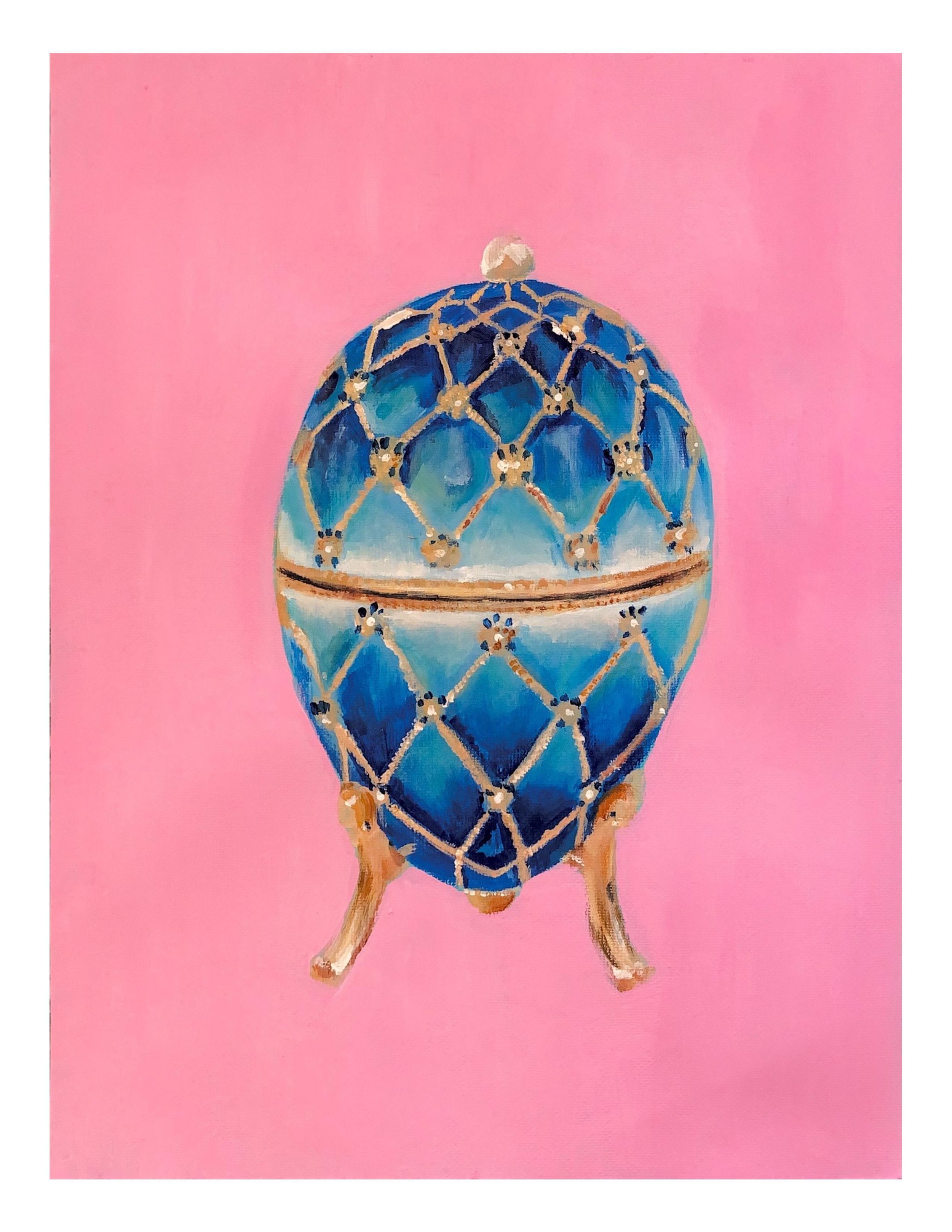Fabergé: Symbol of Russia or Source of Controversy?
Illustration credit: Evie Heathcock
Since the House of Fabergé was bestowed with the title of “Goldsmith by special appointment to the Imperial Crown” in 1885, the brand’s name has called forth an aura of opulence and scandal. And no range of pieces produced by the brand is more emblematic of this dual identity than the Imperial Easter Eggs.
Now part of the Victoria and Albert Museum’s Fabergé in London exhibition, several of the eggs sit quietly in display cabinets for the British public to gaze at in awe. But these ornaments have often been at the centre of decisive moments of Russian history and culture.
Whilst the majority of the country struggled to feed their children, the imperial family lived in luxury, with the gifting of eggs eventually becoming an annual occurrence. Each year the tsar tasked the House of Fabergé to come up with new creations that had to be both beautiful and playful, which would then be given to his wife and mother at Easter. Most are enamelled in a bright or pastel colour, opening to reveal a tiny trinket, both elements incredibly intricately decorated.The Imperial Coronation egg is typical; the gold exterior is enamelled in yellow and the velvet interior holds a small carriage complete with platinum tyres and rose diamond embellishment.
The whimsical-yet-opulent ornaments were symbolic of how out of touch and ignorant the Romanovs were in their final decades of power. Indeed, the beautiful Art Nouveau style ‘Lilies of the Valley’ egg was given to the widely disliked Tsarina Alexandra in 1898, who refused to court the Russian public and explained to her grandmother, Queen Victoria, that it was not “necessary to earn the love of the people” because the royal family were already regarded as divine beings.
In the wake of the revolution, in late 1917 Peter Carl Fabergé left for Riga on the last diplomatic train to Latvia and the Bolsheviks nationalised the House of Fabergé. In order to raise capital via the ‘treasures into tractors’ scheme, the Soviets sold many of the eggs to wealthy Americans. Notable buyers included Lillian Pratt, the wife of industrialist John Lee Pratt, who bequeathed her five Imperial eggs to the Virginia Museum of Fine Arts, and Louisiana heiress Matilda Geddings Gray, whose collection of eggs are now in the MOMA, New York City.
Shouldn’t these treasures, so intricately tied to the Russian imperial family be owned by Russians or put on display for the Russian public? Unfortunately, attempts at this have been peppered by scandal.
Viktor Vekselberg, the owner of the largest collection of the eggs, bought nine from the Forbes publishing family in New York City and set up the Fabergé Museum in St Petersburg. However, Vekselberg is close to the Kremlin: he was implicated in investigations of election meddling in the US 2016 presidential elections, and has been under US sanctions since 2017. Another oligarch, Alexander Ivanov, set up a Fabergé museum in Germany which was raided by British law enforcement a week before Vladimir Putin was due to gift the Rothschild Egg (the museum’s most valuable piece) to the Hermitage. The British investigators claimed that the museum had failed to pay £70,000 in VAT on objects bought over the past 15 years in London. In 2021, Ivanov lent much of the collection to the Hermitage to put on an exhibition. However, it was later reported that a London art dealer had written to the Hermitage criticising them for putting on an exhibition where up to 40% of the artefacts were fake.
But scandal has occasionally been replaced by comedy. In 2015, a man from the midwest found a trinket in a scrap heap and was going to melt it down for its gold value, but googled ‘egg’ and the name found on the side, only to discover an article about a hunt for a $33 million dollar egg. The man took the egg to Wartski in Mayfair to have its authenticity verified, and it was in fact confirmed to be Alexander III’s 1887 gift to his wife, Tsarina Maria Feodorovna.
Most of the eggs are divided between the private collections of Monegasque royalty or the Emir of Qatar, or are in museums in London, the US and St Petersburg. The whereabouts of eight, however, are still unknown, and the intrigue of the Fabergé eggs remains. This sense of mystery, opulence and desirability repeatedly features in popular culture; a Fabergé egg is the central object of the plot of the 1983 James Bond movie, Octopussy, whilst crews of thieves compete to steal a Fabergé egg from a museum in Ocean’s 12. A character in The Simpsons, Bleeding Gums Murphy, collects Fabergé eggs, and Joan Rivers owned a famous collection of artefacts made by the House.
This begs the question, are the eggs profound symbols of imperial ignorance, a purchase that gives you status in the world of the super rich, or just props for luxury and intrigue in popular culture? They are all three. And they are examples of incredible craftsmanship, as well as relics of the final decades of imperial luxury. Most importantly, the majority are available for the public to gaze at in awe as they let their imaginations run wild as to what they mean, where they have travelled to and from, and whose fingers may have touched them. And, in the midst of Russia’s renewed aggression in Ukraine, are the eggs about to become pawns in a new geopolitical battle?
